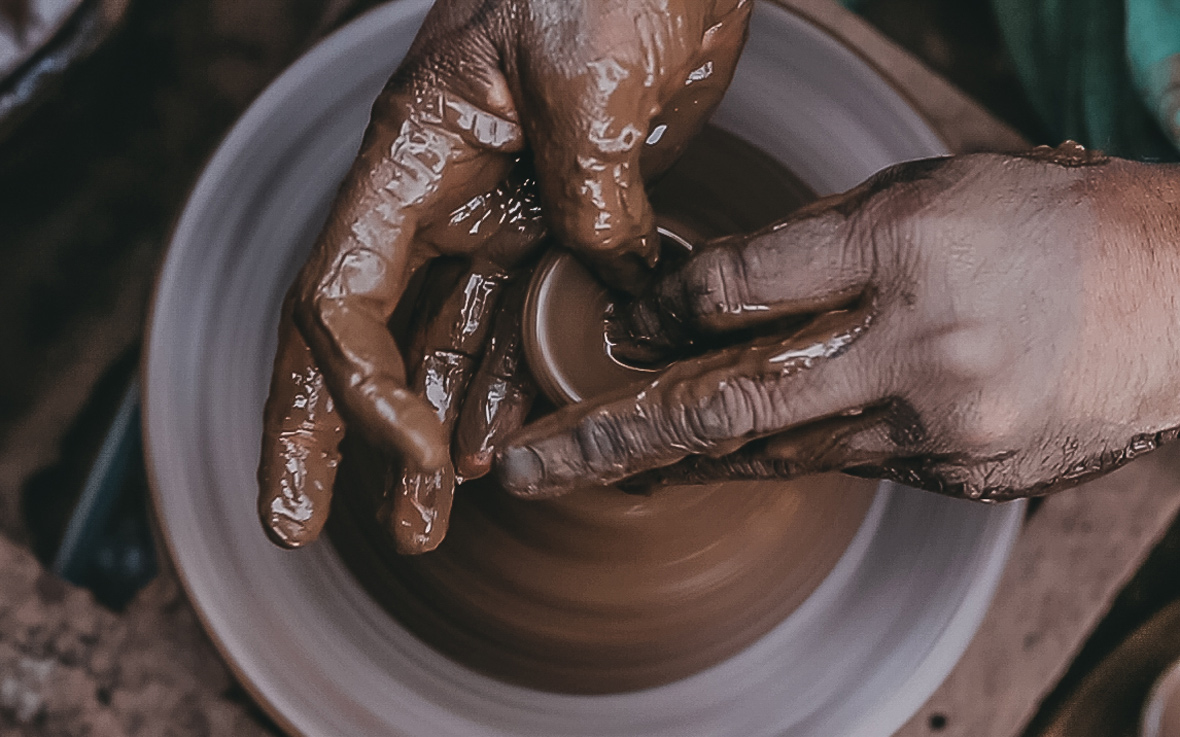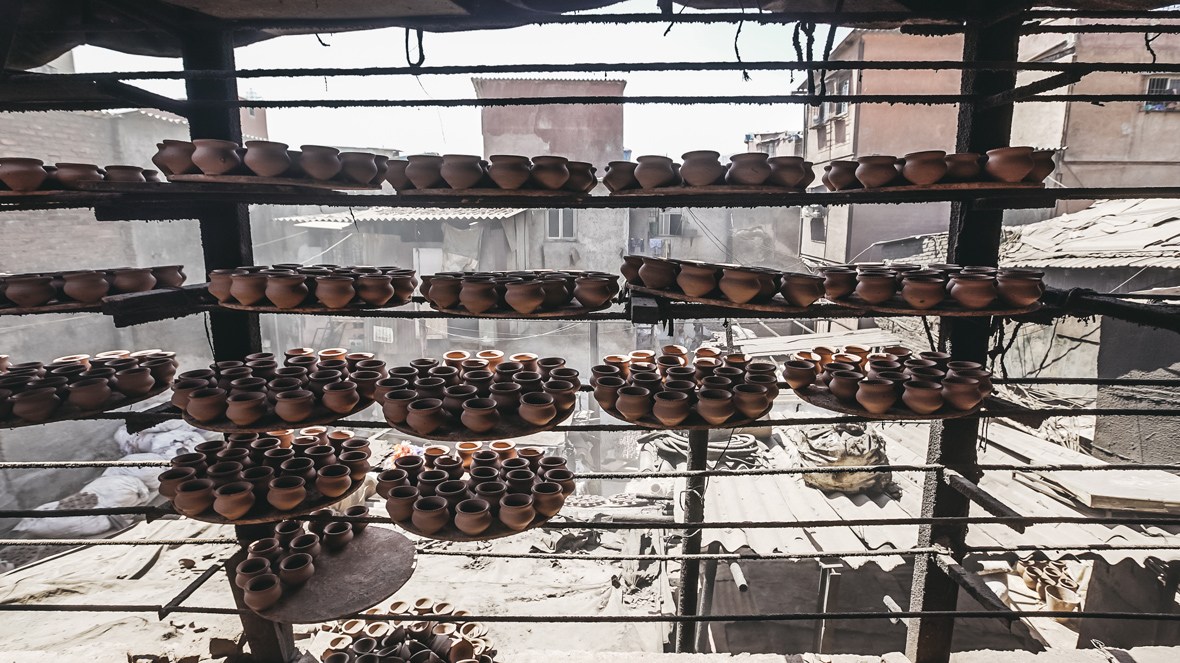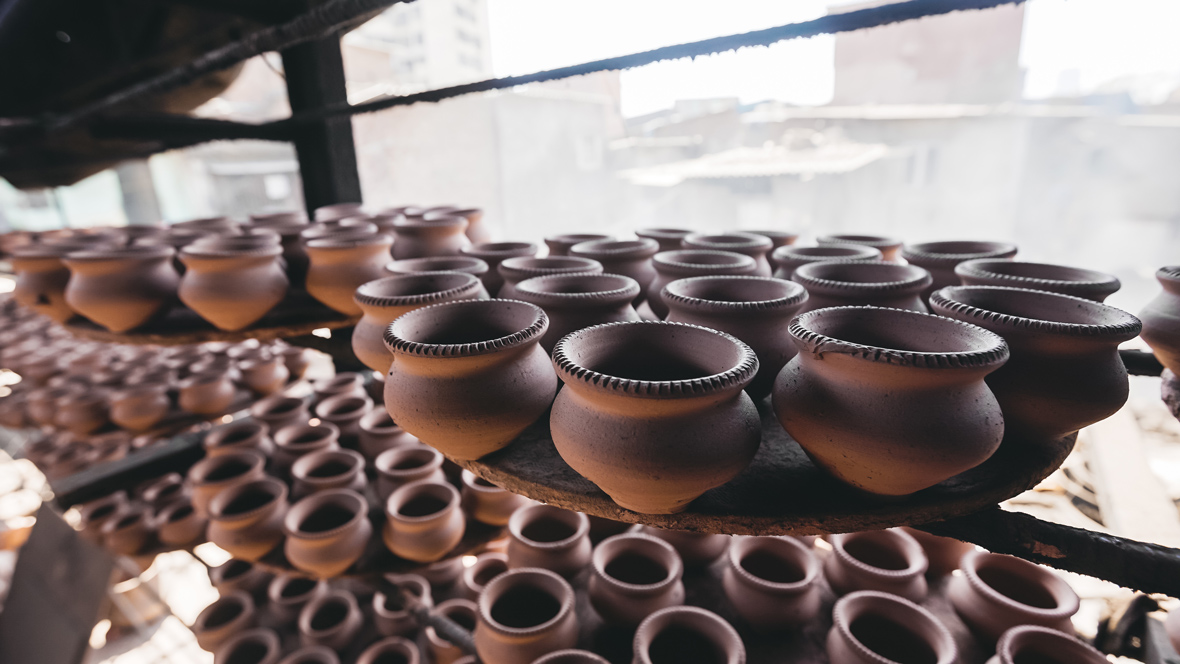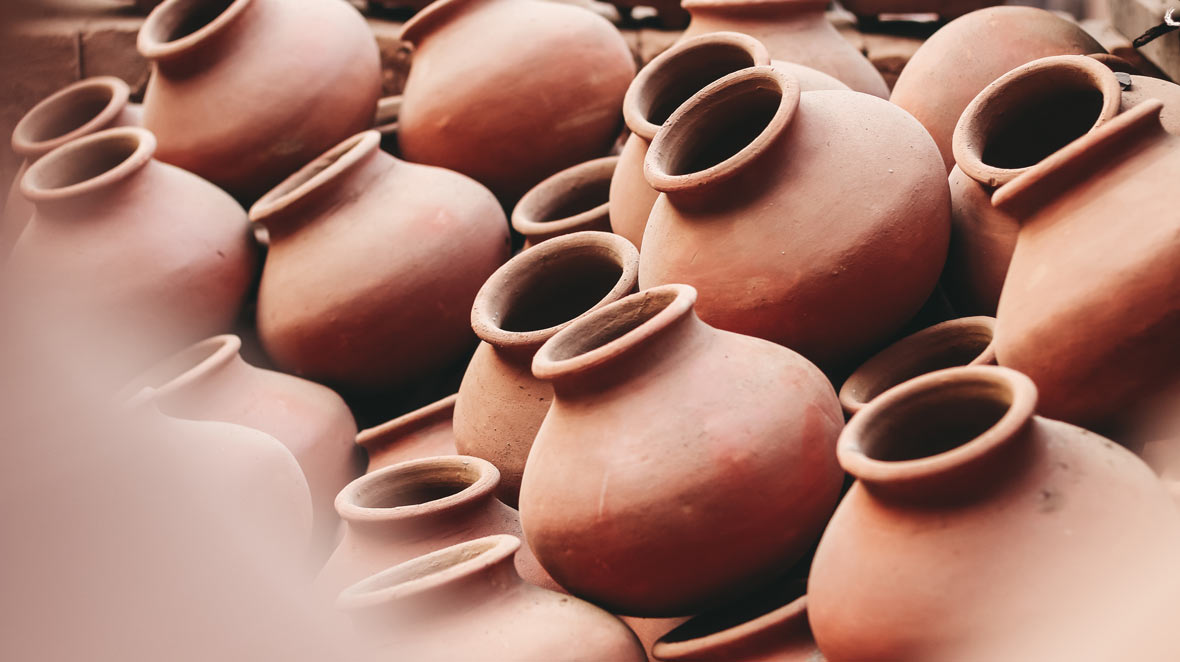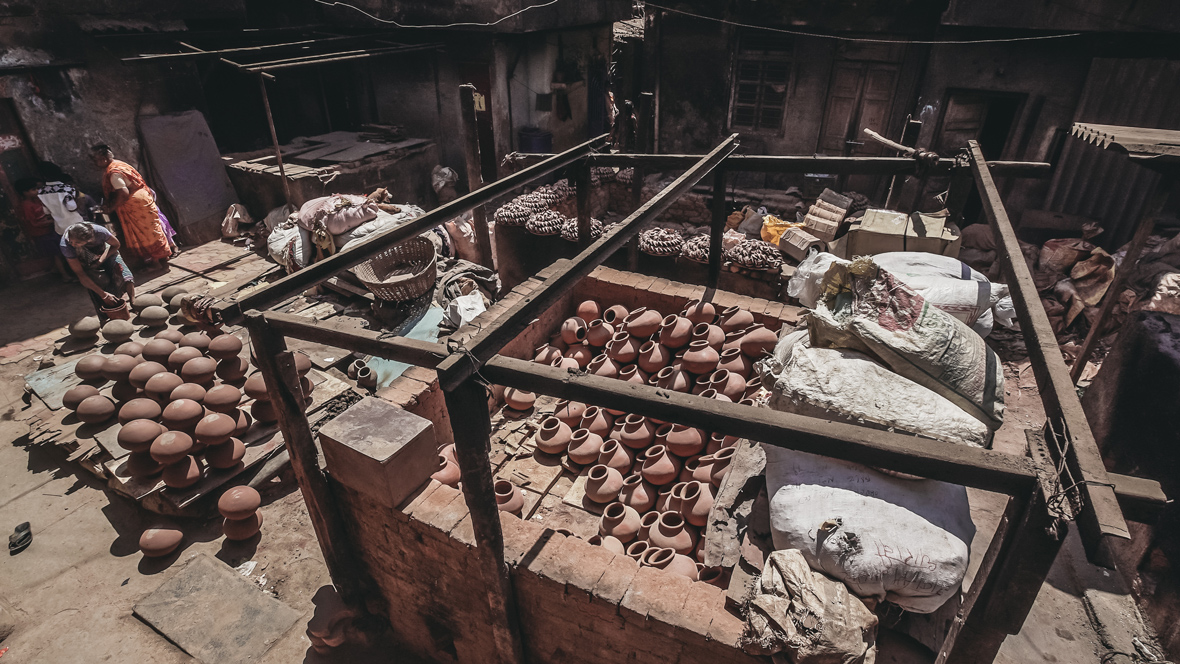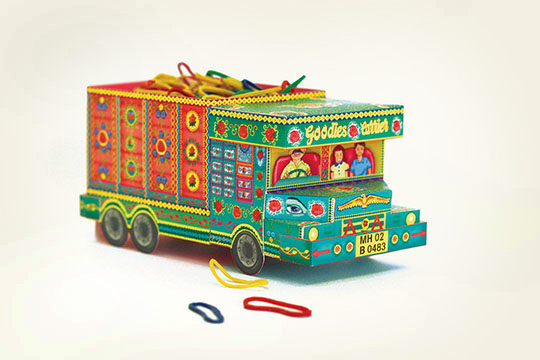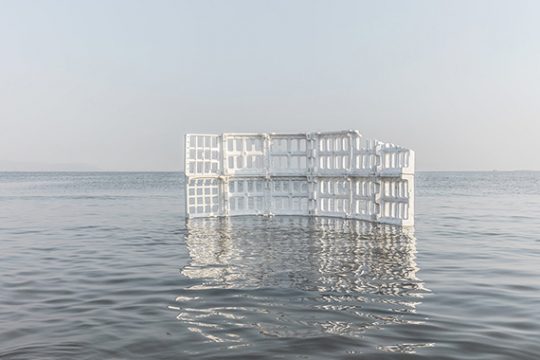无法观看?前往优酷
Nestled in the heart of Mumbai is Dharavi, the third largest slum in the world. With a staggering population of around a million people living in 550 acres of land, Dharavi is home to hundreds of businesses and small-scale industries. Tucked in the center of it all is Kumbharwada, a massive locality that’s home to over 150 families that, even to this day, make their livelihood through pottery making. Established between 1935 and 1940, this potter community is comprised of residents who migrated from places like Saurashtra and Kutch in western India; some of the families that work here today are the fifth or sixth generation of these migrants.
坐落于孟买中心的达拉维(Dharavi)是世界第三大贫民窟。在这片550英亩的土地上,却密集地居住着约100万人。这里有数百间小企业和各种小型工业。而位于这个贫民窟的中心的Kumbharwada地区,则居住着150多个家庭,直到今日,这些家庭仍然靠制陶来维持生计。这个制陶社区形成于1935年至1940年期间,生活在这里的居民最初都是从印度西部的索拉什(Saurashtra)和卡奇(Kutch)这些地方迁移过来的。今天,在这里工作的家庭已经是这些移民的第5代或第6代。
I made my way through the winding lanes of Kumbharwad one morning, and with each turn I took, the road seemed to get narrower. Amidst the morning sunlight peeking in through thatched roofs, the banter of women conversing outside of their homes, the soapy water flowing around my ankles, the energy of excited kids rushing off to school, and the honking of bicycles coming every which way, I could see potters outside of their houses, diligently working with mud and clay as they worked towards their daily quotas.
穿梭于Kumbharwad曲折的小巷间,每一次转弯,我都感觉前面的小巷又变窄了一些。早晨的阳光穿过茅草屋顶,妇女们在家门外嘻笑聊天,肥皂水泡不时划过我的脚踝处,充满活力的小孩正快步跑向学校,自行车的喇叭声从四面八方传来,而陶工们则在家门外用泥和粘土勤勉地工作着,努力完成每日的工作额。

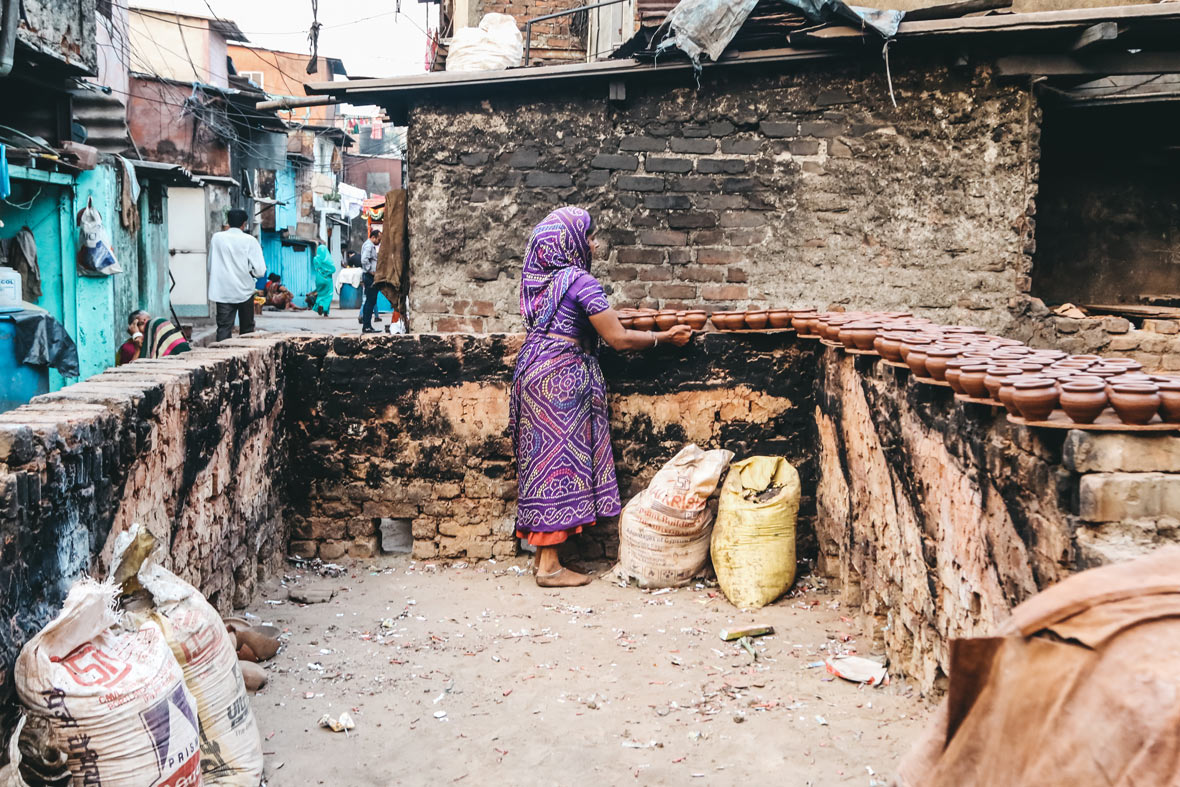
“I started a little early today, at around seven in the morning, because I want to attend a wedding happening here in the evening,” says Ismail, a potter who lives with his wife and 6-year-old son here. Ismail has been involved in this line of work ever since he was a kid. His father was also a potter but passed away while Ismail was young, leaving the responsibility of maintaining the craft and providing for the family up to him. He tells me that he usually prefers making oil lamps because he thinks he can make more oil lamps in an hour than he would other items.
“我今天开始得早一些,大概早上七点左右就开始工作了,因为我晚上想要参加这里举办的一场婚礼。”陶工Ismail说道。他和妻子以及6岁的儿子就住在这里。Ismail从小就开始干这一行。他的父亲也是陶工,但在Ismail还很年轻的时候就已经去世,留给他的是延续这项工艺和照顾这个家庭的责任。他告诉我,他一般更喜欢做油灯,因为他认为自己在一小时内可以做出的油灯数量比做其它的产品要多。

The process of pottery making in Kumbharwada begins with soil being brought in from the outskirts of Mumbai, which is then mixed and turned into clay. Pots are then molded by hand and left to dry in the sun. Once dried, they’re transferred into a furnace to be baked. Once that’s done, the pots are ready for the markets. It’s a creation cycle that never stops here; every family is focused and equally doing their part to keep the cycle going. “I’ve made all kinds of items in my time here in Kumbharwaada, like oil lamps, flower pots, water pots, dessert cups, and more,” says Jeetu Chitroda, one of the seasoned potters of the community. “This is our daily life. We earn our living here. We’ve been here all our lives. We were kids here at one time, and now, we’re lucky enough to see our own kids playing in the very same alleys that we grew up in.”
在Kumbharwada,制陶行业的第一个环节是从孟买郊区购买泥土,然后通过混合变成制陶用的粘土。通过手工成型后的陶器会被放置在阳光下晾干。一旦干透后,就可以将陶器转入火炉里烧制。这一步完成后,就可以准备将这些陶器拿到市场上去卖。在这里,制陶是一个永无止境的循环过程,每个家庭都致力于这一个过程,尽其所能使这个循环不断运转下去。当地经验丰富的陶艺家之一Jeetu Chitroda说:“在 Kumbharwaada,我制作过各种各样的陶器,像油灯、花盆、水盆、甜点杯等等,这就是我们的日常生活。我们通过这种方式来维持生计。我们一辈子生活在这里。我们也曾经是这里长大的孩子,而现在,很幸运地,我们可以看到自己的小孩在我们长大的小巷里玩耍。”
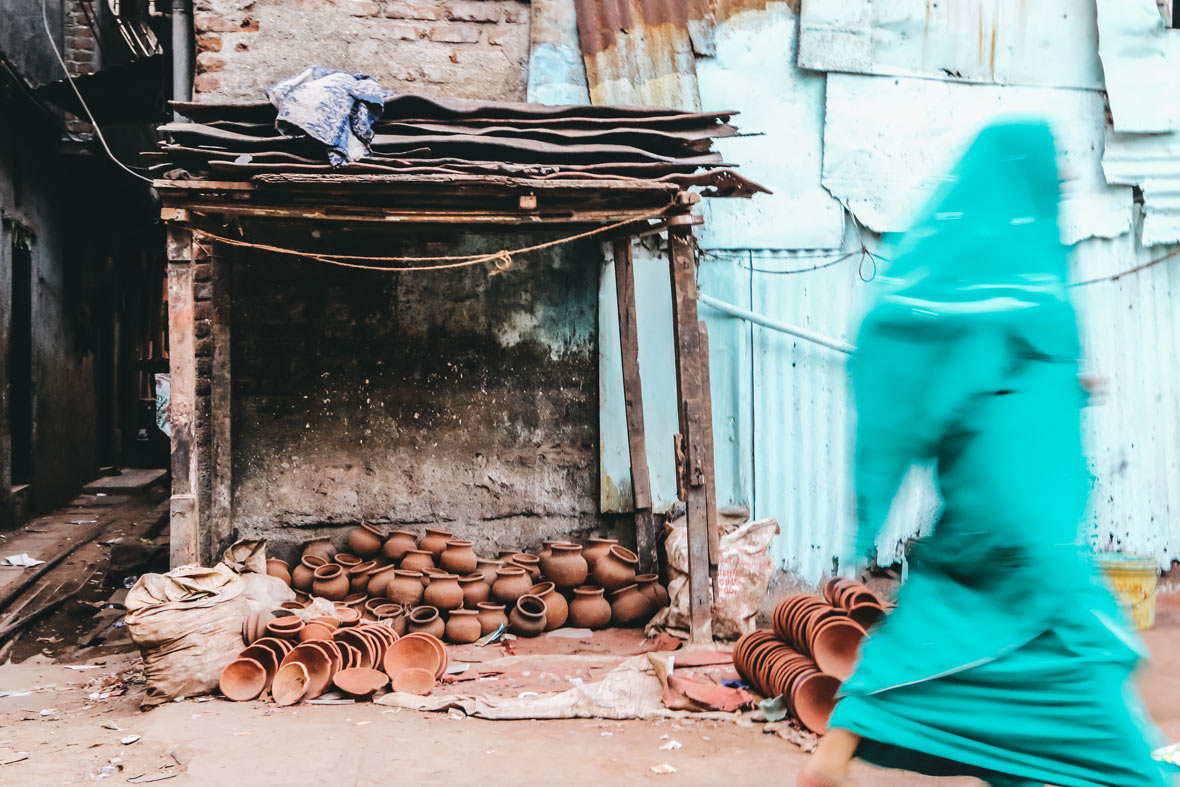
However, the families here are adapting to the changing times, with some transitioning into a more contemporary lifestyle. Nowadays, it’s normal to see a family here with the father and mother staying in the community to keep the pottery business going while their son leaves in pursuit of a different career. Beyond the preservation of traditions and culture, one of the most interesting aspects of the community is seeing how the population is divided into Hindus and Muslims, all of whom live together in harmony. After observing their lifestyle and adaptive nature, I’ve come to see that Kumbharwaada isn’t simply a potter’s hub wedged in the largest metropolitan in the country. Instead, I now see it as a symbol of a successful rural ideology that’s breathing and injecting life in a rapidly changing urban landscape.
然而,这里的家庭也正在慢慢适应时代的变化,开始逐渐过渡到一种更现代的生活方式。如今,有越来越多的家庭,父母留在当地维持陶器生意,而他们的儿子则离开这里,去追寻不一样的事业。除了传统和文化的传承问题,当地社区最有趣的另一方面是,在这里生活的人们主要信奉印度教和穆斯林,而他们都能和睦相处在一起。在观察完他们的生活方式,以及他们适应环境的能力之后,我明白到,Kumbharwaada 并不只是一个夹在印度大都会城市缝隙中的制陶中心。相反,在我看来,它代表着一种成功的农村意识形态,充满活力,为瞬息万变的城市注入蓬勃的生命力。
